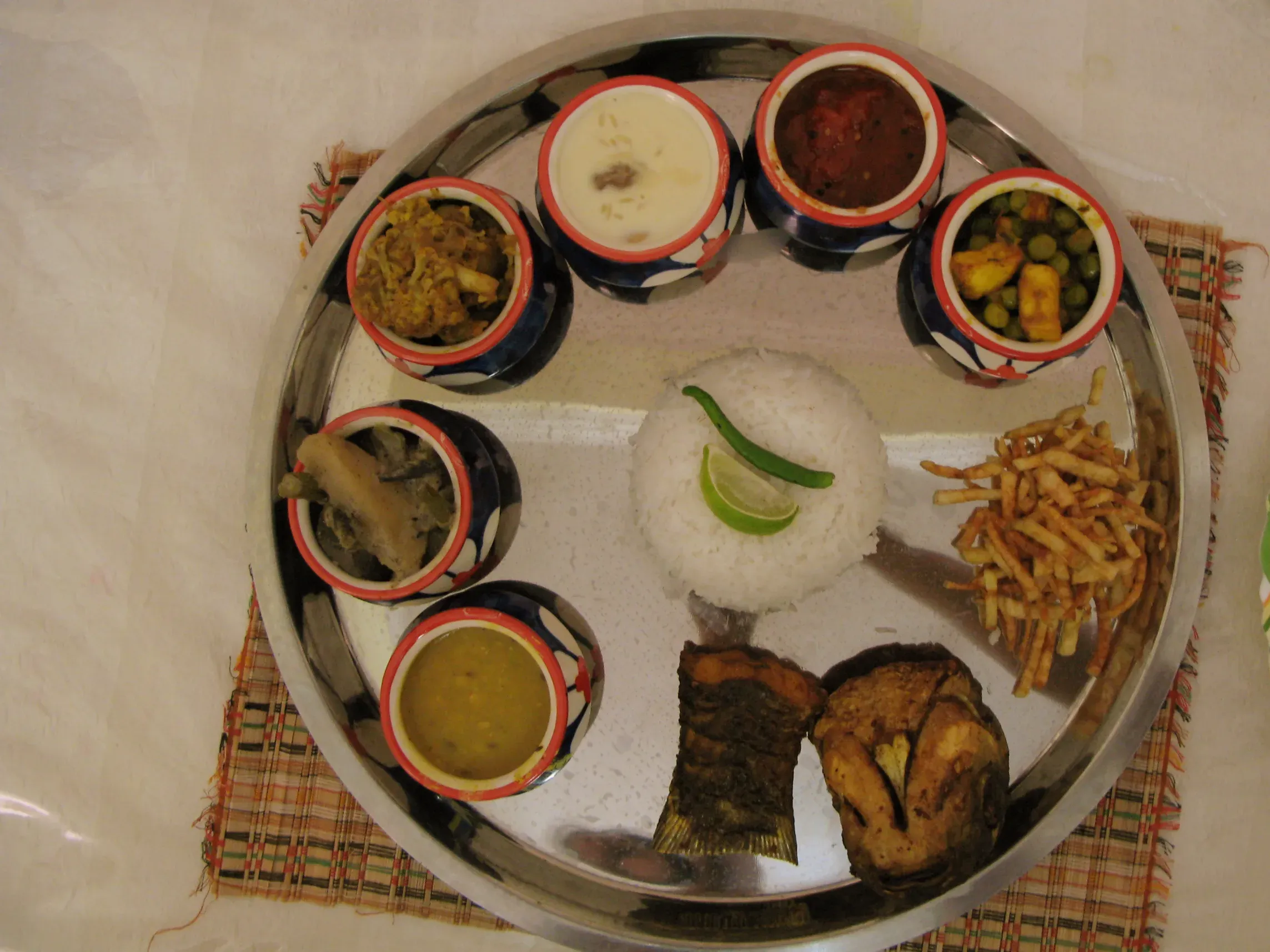My baby shower

My baby shower was celebrated in the Bengali traditional way, known as Saadh. This ritual is designed to pamper the first-time mother and uplift her spirits as she prepares to face the challenging times of impending motherhood. Typically held in the seventh or ninth month of pregnancy, the ceremony is organized by the mother-in-law, who invites women known to her. It’s a gathering exclusively for women.
In our tradition, the mother-in-law presents all the garments I will wear during the ceremony. Since this event occurs twice, once on each side of the family, it was consolidated into a single day due to my health condition in the seventh month.
I was usually seated on the floor facing east, with rituals and sometimes a puja performed. However, given my medical condition and inability to sit for an extended period, some rituals were shortened. The floor is adorned with Alpana designs using powdered rice, featuring an earthen or copper pot placed in the center. The pot is decorated with a red swastika and filled with pure water, mango leaves, and a green coconut—a symbol of auspiciousness.
During the ceremony, the mothers of the expectant mother fill my lap, represented by the aanchal of my sari, with various items. The mother-in-law typically initiates the blessings, ululating for me and my unborn child, followed by placing items like seven different types of dry fruits, fresh fruits, and sweets in my lap. Other invited married women then contribute their blessings and gifts. It was a delightful experience receiving well-wishes from elders in their unique ways.
To conclude the celebration, I was treated to a feast featuring seven different types of savory traditional dishes. Bengali ceremonies, including weddings and baby showers, are known for their elaborate serving rituals. While professional catering and buffet-style dining have become common, the courses still progress from lighter to richer and heavier. Rice remains a constant throughout the meal.
The feast begins with a soupy mixture of vegetables in a ginger-mustard sauce, known as shukto, followed by Dal (lentil curry), the most substantial course, accompanied by fritters (bhaja). Fritters, including the tailfin and head of fish, are a must for the expectant mother. The meal continues with two kinds of vegetable curry and a fish course featuring two varieties. The final course is chutney, typically tangy and sweet, often made from mangoes, tomatoes, or pineapple. And, of course, the sweet dish, whether it be rice pudding (kheer) or rasogulla, is a delightful way to conclude the celebration.

About the Author

Pamela
View all posts →

